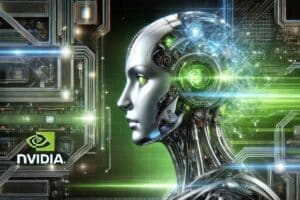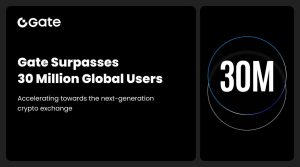Nvidia has launched Nemotron, an advanced version of Llama-3.1, designed to surpass the most advanced artificial intelligence (AI) models, including GPT-4.
Thanks to curated data and innovative hardware, Nemotron promises unparalleled performance in the landscape of artificial intelligence. In this article, we will see all the details.
Nemotron by Nvidia surpasses GPT-4o and Claude-3 thanks to unprecedented AI computing power
As anticipated, Nvidia has presented its new model of artificial intelligence, Llama-3.1-Nemotron-70B-Instruct, with a disruptive impact.
Our Llama-3.1-Nemotron-70B-Instruct model is a leading model on the
Arena Hard benchmark (85) from @lmarena_ai.
Arena Hard uses a data pipeline to build high-quality benchmarks from live data in Chatbot Arena, and is known for its predictive ability of Chatbot Arena Elo… pic.twitter.com/HczLQQ6EOp
— NVIDIA AI Developer (@NVIDIAAIDev) October 15, 2024
This model, according to what Nvidia claims, promises to surpass the most advanced AI systems currently available, such as GPT-4o by OpenAI and Claude-3 by Anthropic.
The announcement, made via a post on X from the Nvidia AI Developer account, quickly captured the attention of industry experts.
The Nemotron model represents a modified and improved version of Meta’s Llama-3.1-70B-Instruct, an open-source AI platform.
The modification made by Nvidia, highlighted by the “Nemotron” part of the name, reflects the significant technological contribution of the company, which has pushed the model to new heights of power and versatility.
The underlying idea is that this model can be more “useful” and performant compared to more popular models like GPT-4 and Claude-3, thanks to a refined tuning work and a cutting-edge hardware infrastructure developed by Nvidia itself.
Nemotron is born within the context of the chatbot arena, known as lmarena, a space where different models of artificial intelligence are compared.
Meta, with its series of AI models named “Llama,” has provided the foundation on which Nvidia has built this new system.
The main intent was to create an open-source AI model that was accessible to developers for further customizations.
However, Nvidia wanted to go further, leveraging its resources to create an artificial intelligence system capable of rivaling and surpassing the leaders of the sector.
What distinguishes Nemotron?
One of the key elements that has allowed Nemotron to emerge is the use of set di dati carefully selected and highly sophisticated fine-tuning processes.
Nvidia has leveraged its enormous computing capabilities, using cutting-edge hardware, to push the Llama-3.1-70B model beyond its initial limits.
This has allowed the creation of an AI version that is not only more powerful but also more “useful” from a practical point of view.
A term that, in the context of artificial intelligence, can have multiple interpretations, but generally refers to the ability of the model to provide relevant, accurate, and timely responses.
Benchmarking is one of the methods used to evaluate the effectiveness of an artificial intelligence model. However, there is no single and definitive methodology to determine which model is “the best”.
This is because the utility and efficiency of an AI model often depend on subjective evaluations and the context in which it is used.
Benchmarking, in fact, consists of subjecting various AI models to the same tests and evaluating the results obtained in terms of utility and accuracy.
In the case of Nemotron, Nvidia claims that its new model surpasses by a wide margin the main competitors, including GPT-4o and Claude-3.
The competition in the chatbot arena is intense, and Nemotron seems ready to climb the rankings.
Although it is not yet fully listed in the official lmarena rankings, Nvidia claims that its model achieved a score of 85 in the “Difficult” test. An evaluation that, if confirmed, would place it at the top of this particular category.
This result would be even more remarkable considering that Llama-3.1-70B, the base of Nemotron, is a mid-level model compared to the 405B version of Llama-3.1, much more complex and with a significantly greater number of parameters.
Open source base and other parameters
To give an idea of the size and complexity of AI models, GPT-4o, one of the most advanced models from OpenAI, has been developed with over 1 trillion parameters.
The number of parameters is one of the key indicators of the power and capacity of a bull artificial intelligence model.
However, Nvidia seems to have succeeded in maximizing the performance of Nemotron despite the relatively lower number of parameters compared to GPT-4o.
Another interesting aspect of Nemotron is its open source base, which makes it accessible to a wide community of developers.
This open-source approach has the potential to further accelerate progress in the field of artificial intelligence, as it allows experts from all over the world to contribute to the improvement and customization of the model.
Furthermore, the fact that Nvidia has decided to base its work on an open source project like Llama-3.1 demonstrates the importance of collaboration and shared innovation in technological progress.





















